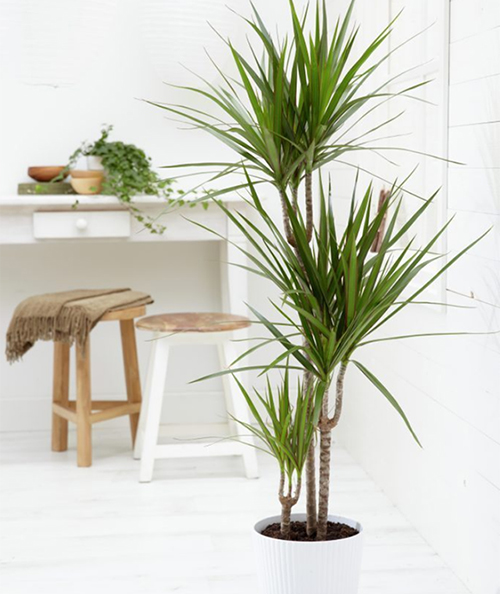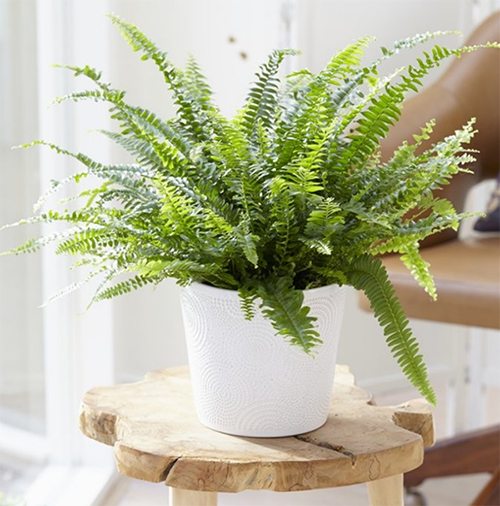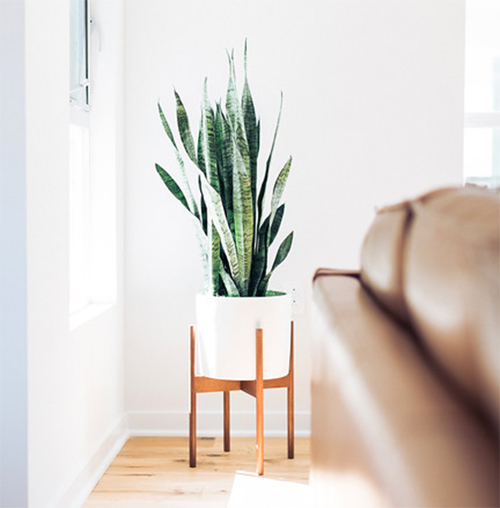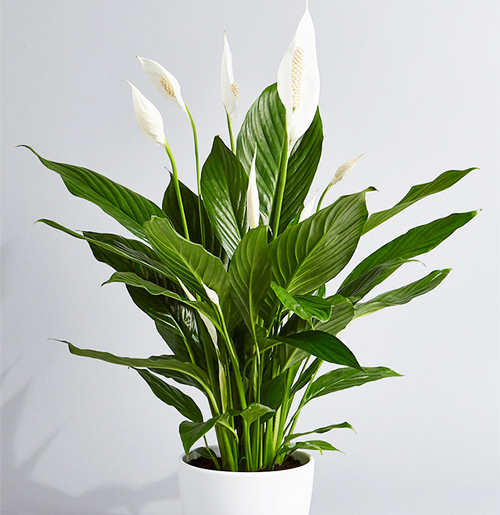Top Plants for Improving Indoor Air Quality
Indoor plants are enjoying a major design moment right now, but did you know they can also drastically improve your indoor air quality? Indoor air pollution can be a significant problem in many homes and workplaces. Studies have shown that certain indoor plants can help purify the air by removing pollutants. Not only do these plants improve air quality, but they also add a touch of natural beauty to any indoor space.
Poor indoor air quality can lead to a range of health issues, including respiratory problems, headaches, and fatigue. One effective way to improve indoor air quality is by adding indoor plants to your home. Plants absorb carbon dioxide and release oxygen and play an essential role in the carbon cycle by absorbing carbon dioxide from the air during photosynthesis and releasing oxygen. By adding indoor plants to your space, you’re increasing the amount of oxygen in the air, which can help improve your mood, increase productivity, and reduce fatigue.
Plants filter out toxins. Indoor air can contain a range of toxins, including benzene, formaldehyde, and trichloroethylene. These toxins can come from household products, cleaning supplies, and even furniture. Plants have been shown to absorb and filter out these toxins, helping to improve indoor air quality. Some of the best plants for removing toxins include spider plants, peace lilies, and bamboo palms.
Plants add humidity to the air. Dry air can cause a range of health issues, including dry skin, nasal congestion, and irritated eyes. Plants release moisture into the air through a process called transpiration. This can help increase the humidity levels in your indoor space, leading to improved respiratory health and overall comfort.
Plants can reduce stress and anxiety. Indoor plants can also have a positive impact on mental health. Studies have shown that exposure to plants can reduce stress and anxiety levels, improve mood, and increase feelings of calmness. This can be especially beneficial for those who work in high-stress environments or spend a lot of time indoors.
In the late 1980’s NASA conducted a Clean Air Study to find the most effective indoor plants for filtering harmful toxins and pollutants from their space stations. The study found that certain plants are effective at removing benzene, formaldehyde, trichloroethylene, xylene, and ammonia from the air — chemicals that have been linked to health effects such as headaches, nausea and eye irritation. Read on for 5 houseplants that will clean the air and add a dose of style to your healthy home!

Dracaena Marginata
Dracaena are common foliage plants that come in over 40 varieties. Known to filter benzene, formaldehyde, trichloroethylene and xylene. Perfect for modern spaces with filtered sunlight. (May be harmful to pets if eaten).

Boston Fern
Ferns are a great way to add softness and greenery to your small space – we especially love grouping a few together on a bookshelf or console. They prefer indirect sunlight and regular waterings. The Boston fern is a beautiful plant that can add a touch of natural beauty to any indoor space. It is also known to remove pollutants such as formaldehyde, xylene, and benzene from the air. Boston ferns do require a bit more care than some of the other plants on this list, but they can be well worth the effort.

Variegated Snake Plant
This sculptural, hardy plant is low maintenance and easy to care for. Known to remove benzene, formaldehyde, trichloroethylene and xylene from the air.

Peace Lily
This plant takes the prize for biggest workhorse – the Peace Lily has been proven to filter out all 5 harmful chemicals from the air! Place peace lilies in a shady spot and keep the soil moist without overwatering. This beautiful plant that can thrive in low light conditions. It is also known to remove pollutants such as benzene, formaldehyde, and trichloroethylene from the air. One thing to keep in mind with peace lilies is that they are toxic to pets, so it is important to keep them out of reach of cats and dogs.

Spider Plant
The spider plant is a great choice for those who are new to indoor gardening. This plant is incredibly easy to care for and can thrive in a variety of lighting conditions. Spider plants are known to remove pollutants such as formaldehyde and xylene from the air.
Ready to start on your eco-friendly interior design project? Contact us today to get started!
